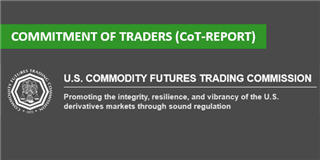Test NanoTrader Full I Test Tradingview I Test the mobile platforms All for CFD-Forex & Futures
You are here
The Commitments of Traders Report (CoT) Part 1

Free insider information on the positions of major market participants such as hedge funds, banks and industrial groups? The CoT Report makes it possible! See where the smart money is flowing. With the Commitment of Trades Report you can trade in the slipstream of the big players.
Trading based on the CoT report
The objective of the CoT report
The CoT Report refers to the trading positions of notifiable market participants in futures transactions. The aim is to create transparency about the positions in the form of a list of the open interest, i.e. all open futures and options contracts. Every Friday, the positions that exist on Tuesday evening after the close of trading are published. This gives traders an idea of the "positioning" of major market participants.
What is the open interest?
Open interest refers to the volume of all open futures and options contracts (so-called unconditional and conditional forward transactions) of market participants. It should be noted that the sum of the open interest across all market participants is always zero, since every seller faces a buyer. Even though this is a zero-sum game, the distribution of positions among different market participants can be very valuable information.
In order to be able to depict this distribution, the CFTC distinguishes between three main market players in its report:
- Commercials
- Non-commercials
- Non-Reportables
If open interest rises overall, this means an increase in trading volume. Similarly, the trading volume falls as open interest decreases.
The different market participants in the CoT report
Since some of the futures traders are subject to reporting requirements, the positions (in the older reports) can basically be assigned to three market participants. In the meantime, the categories have been extended, for more information see below under "extended CoT report".
1. Commercials
Commercials describe those traders who appear on futures markets mainly for hedging reasons. They therefore regularly build up counter-positions and are commonly known as "hedgers". Of course, there is a very detailed definition of commercials on the part of the CFTC, which basically consists of two factors: on the one hand, the position held must exceed the prescribed critical number of contracts, and on the other hand, the market participant must have declared himself as a "hedger".
Example: Commercials are primarily producing, processing or manufacturing companies that hedge on the futures market due to their dependence on commodity prices, for example. One example of many could be large farmers. What is important here is the intention that commercials want to hedge their production costs and do not engage in speculation, i.e. often build up positions contrary to their market expectations.
2. Non-commercials
Non-commercials differ from commercials in that they are essentially profit-oriented and have a speculative motivation. Non-commercials are institutional market participants such as money managers who are subject to CFTC reporting requirements due to their position size (usually more than 20 contracts), but do not fulfil the criterion of a "hedger".
Example: Non-commercials are usually performance-oriented institutional traders such as hedge funds, or solvent private investors who meet the minimum reporting criteria.
3. Non-reportables
By definition, non-reportables are the difference between open interest and reportable positions - precisely because there is no reporting obligation for non-reportables. Thus, this term mainly hides small and individual market participants.
Example: Private investors fall under this category for the most part. Due to the lack of position sizes and the fact that they often enter trends late, they are also colloquially referred to as "dumb money". Source: Godmode
Recommended broker
People also read
The Commitments of Traders Report (CoT) Part 2
Volume profile and key price levels
Recommended regulated managed account service



